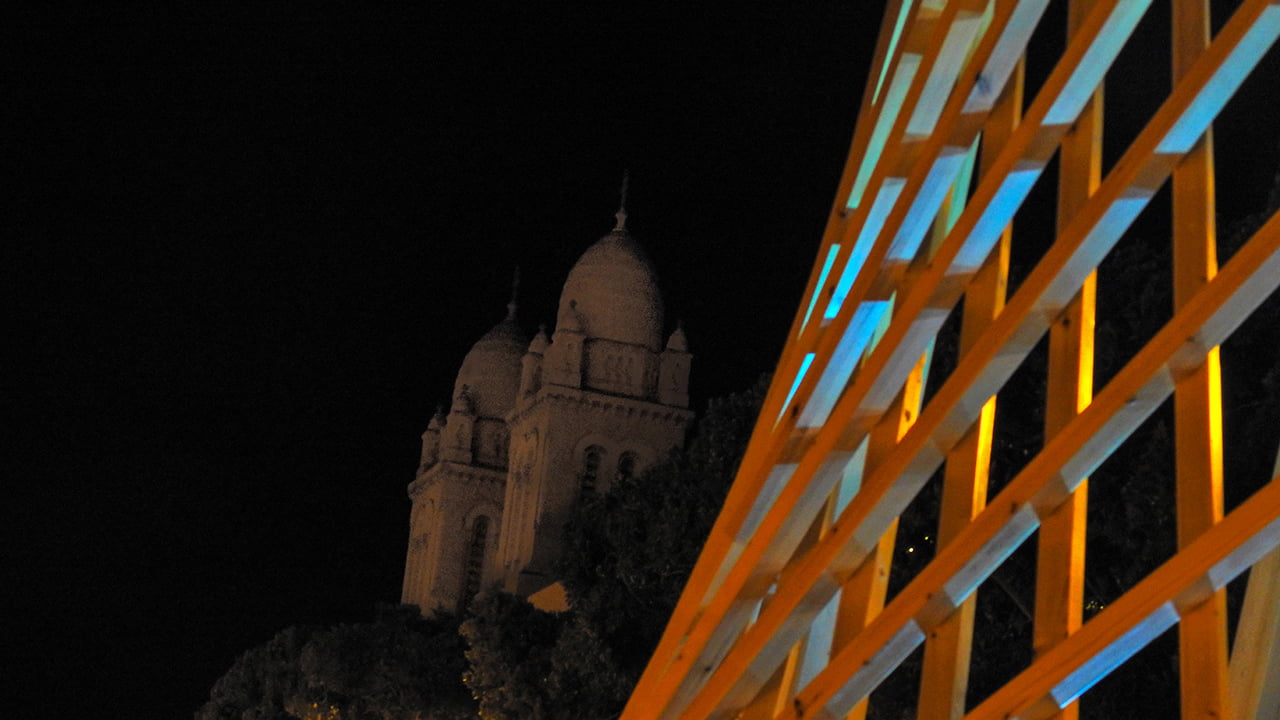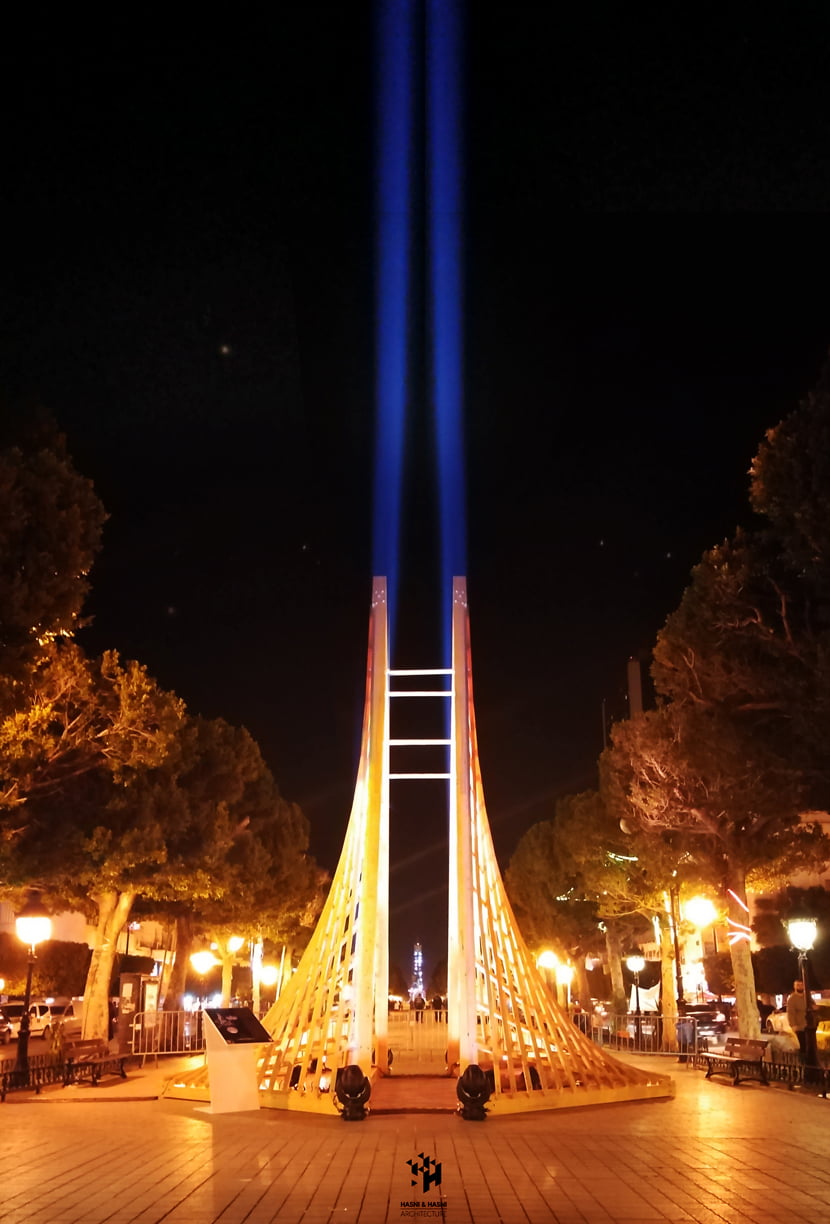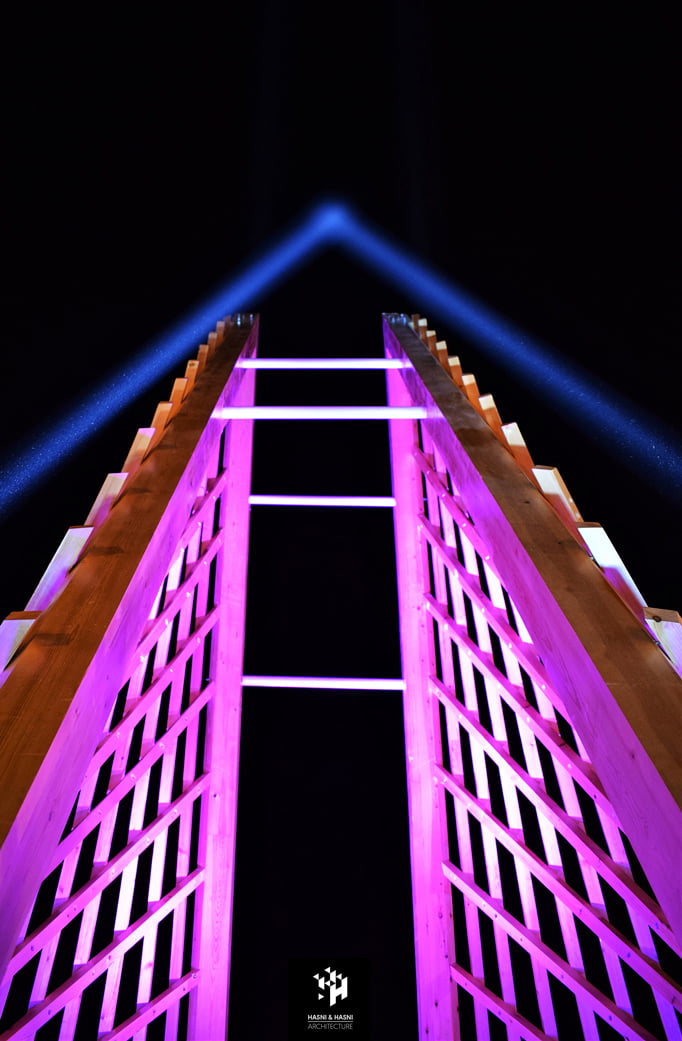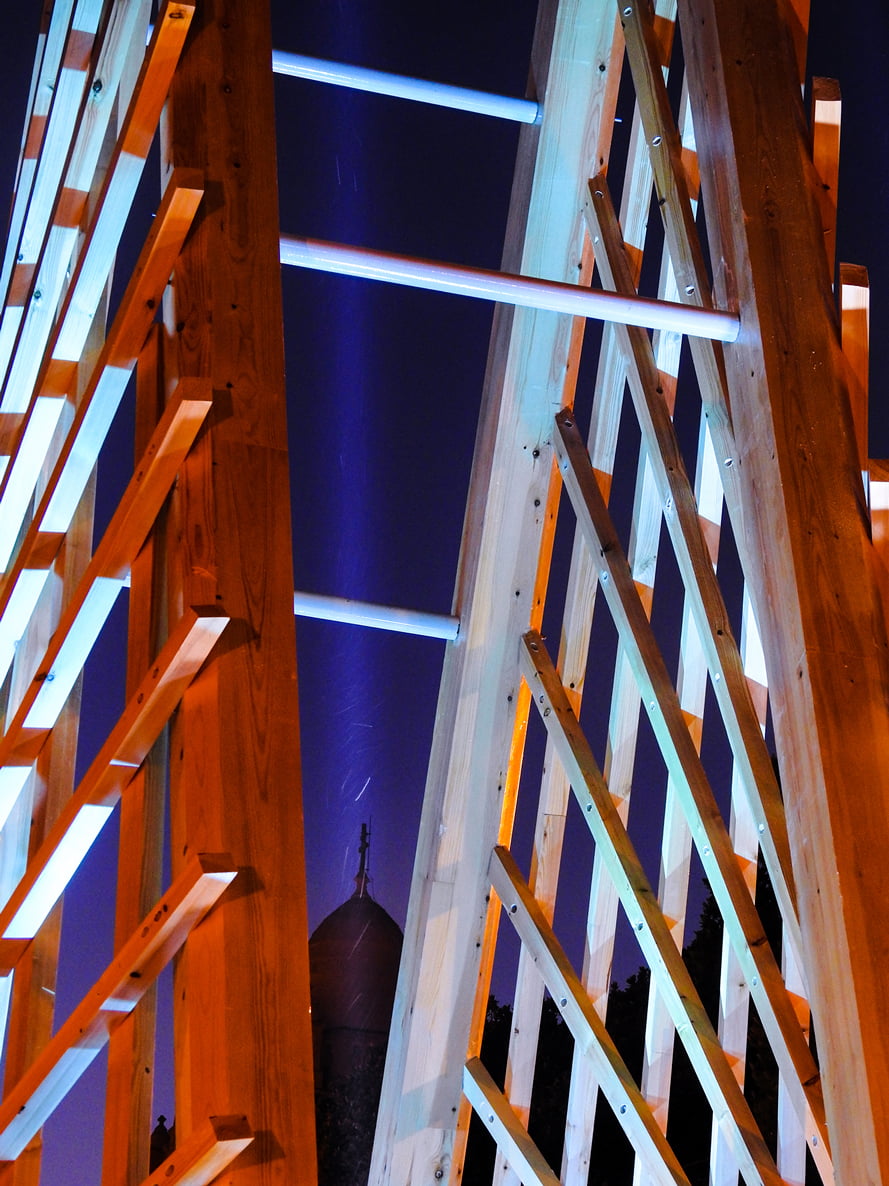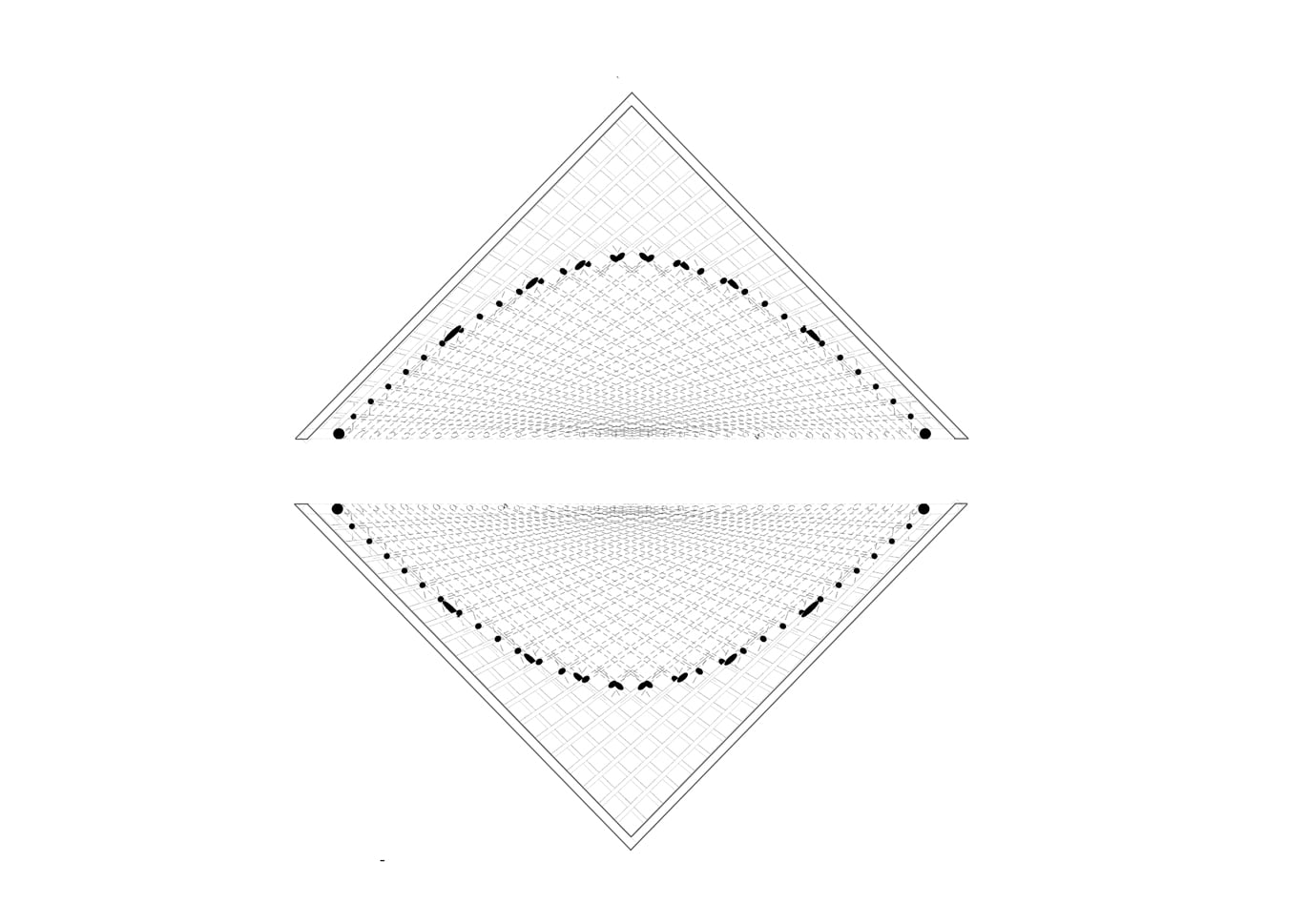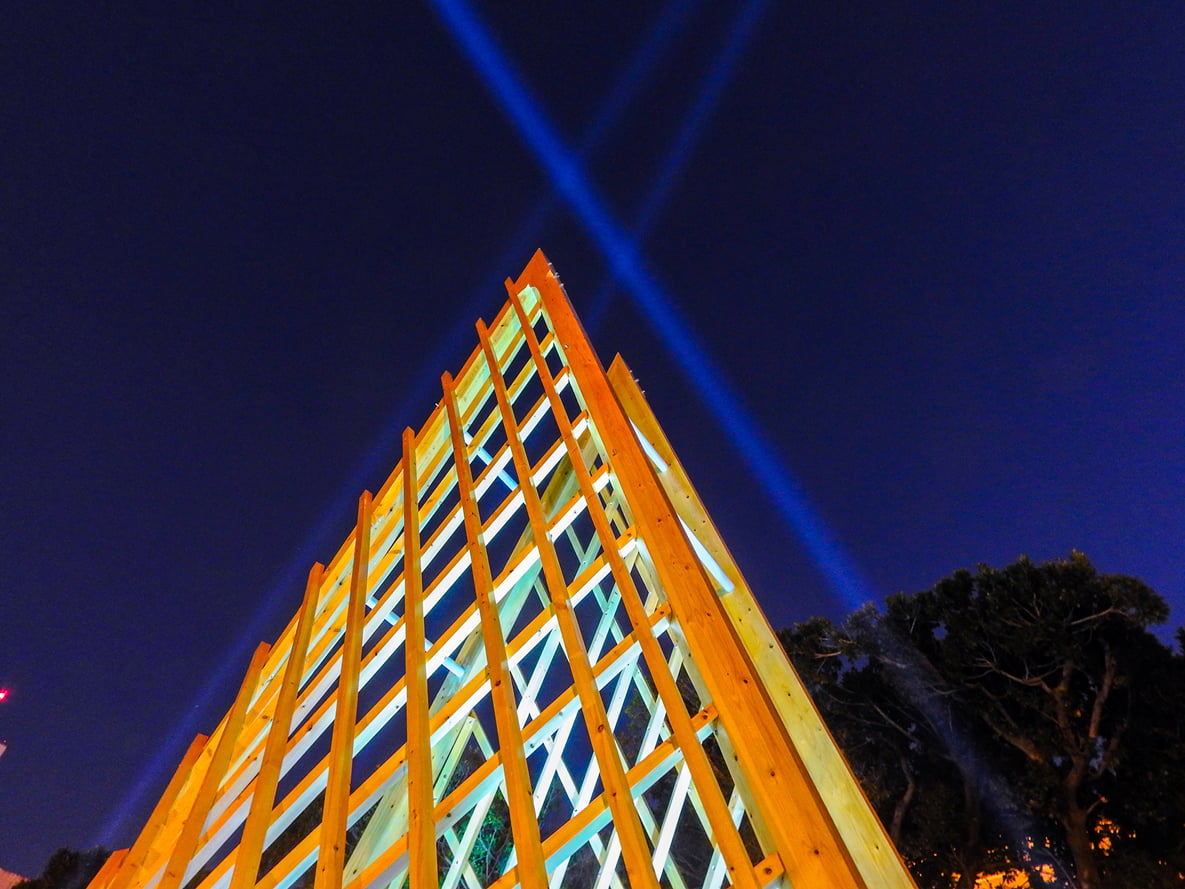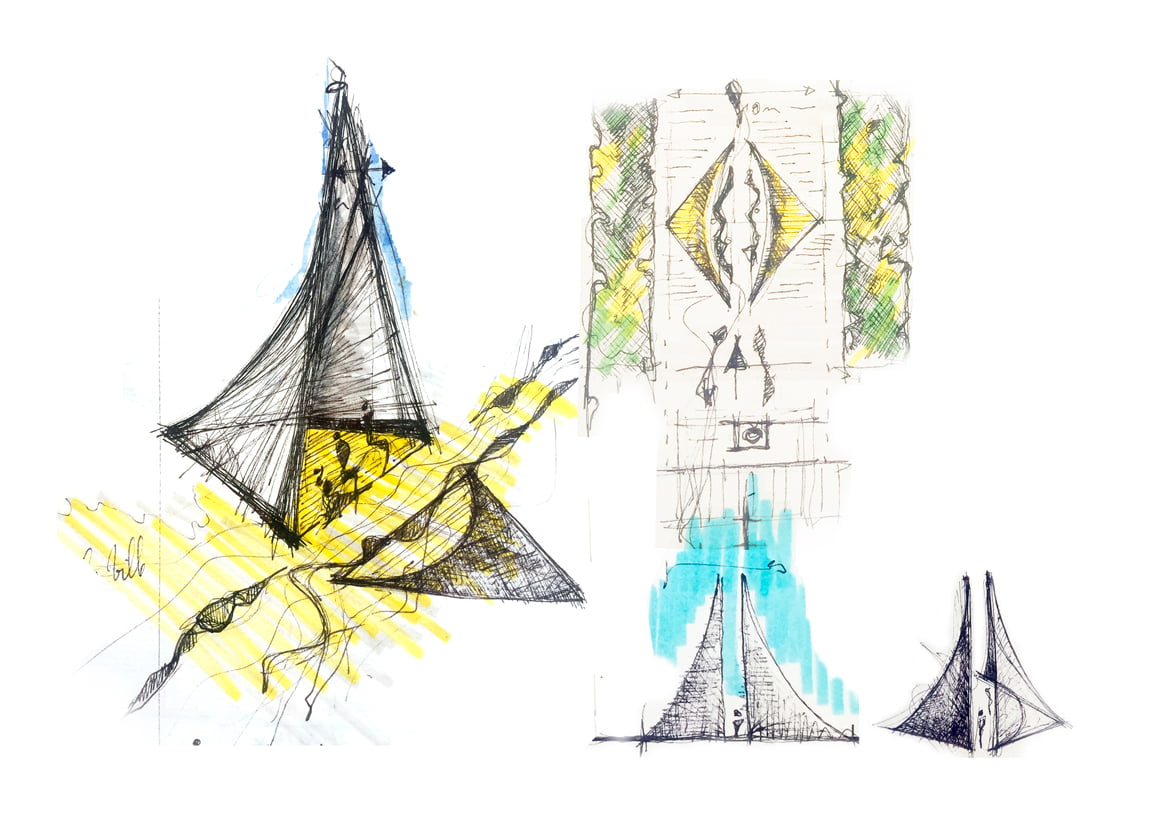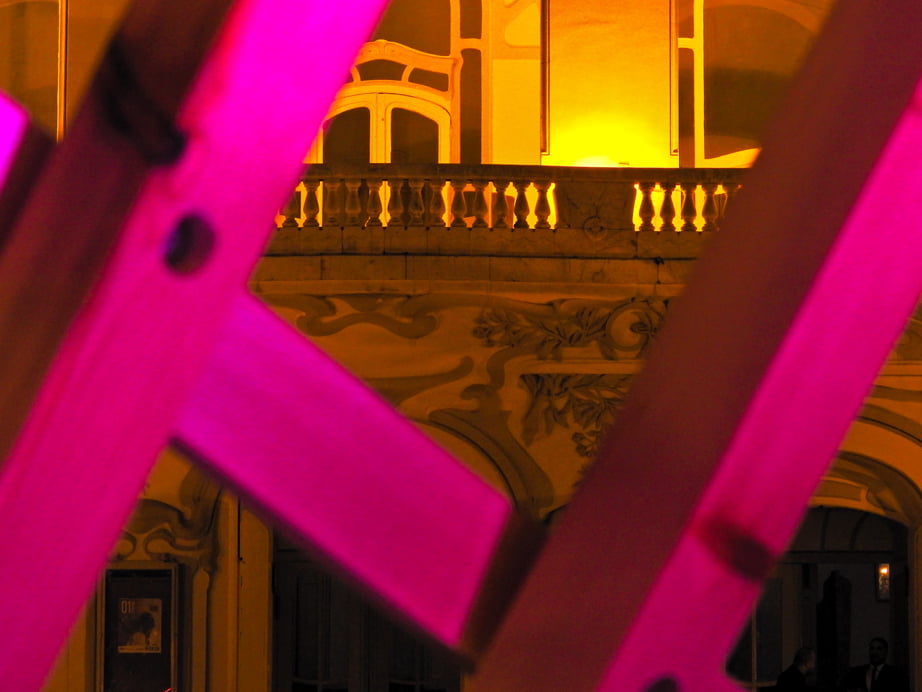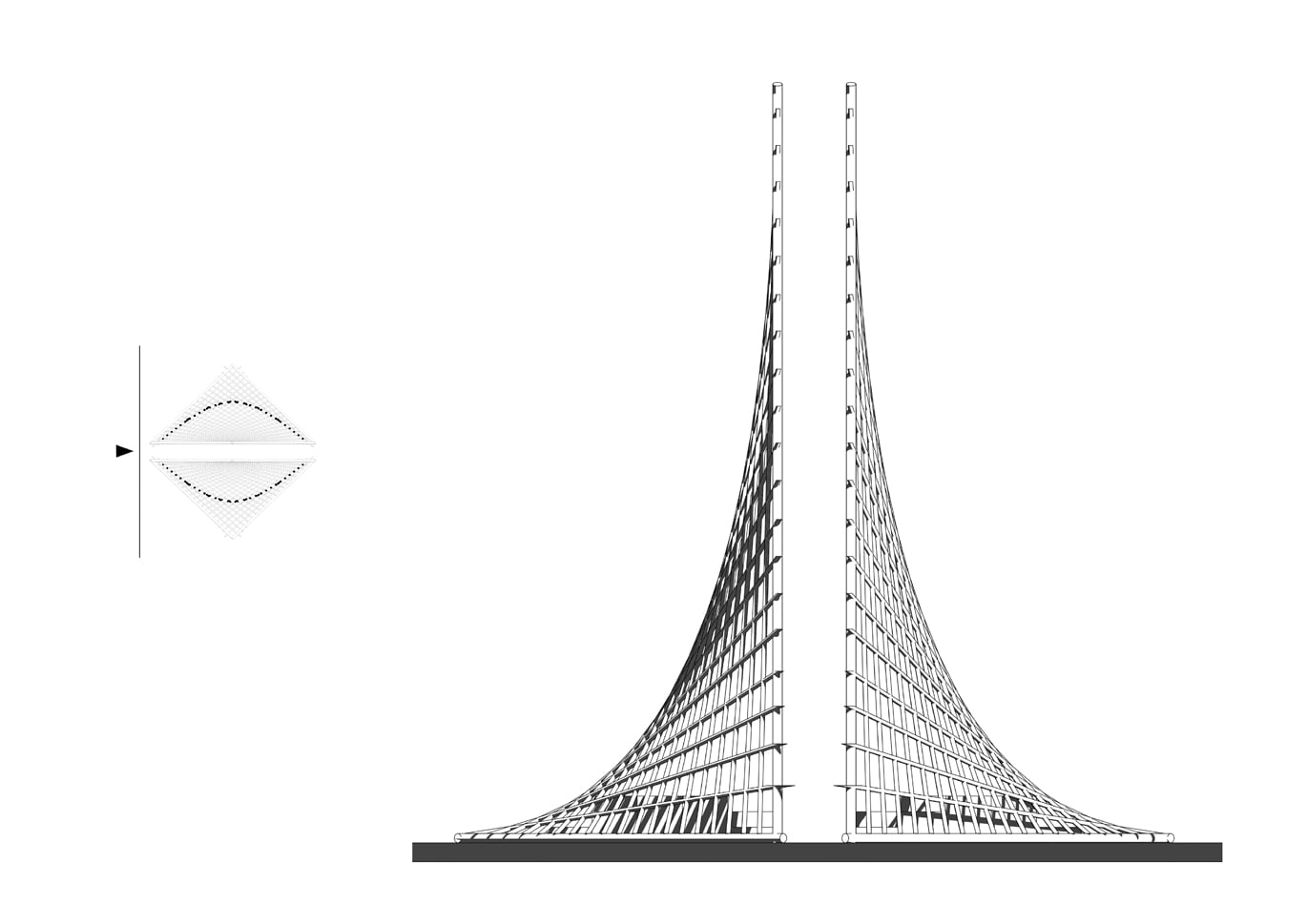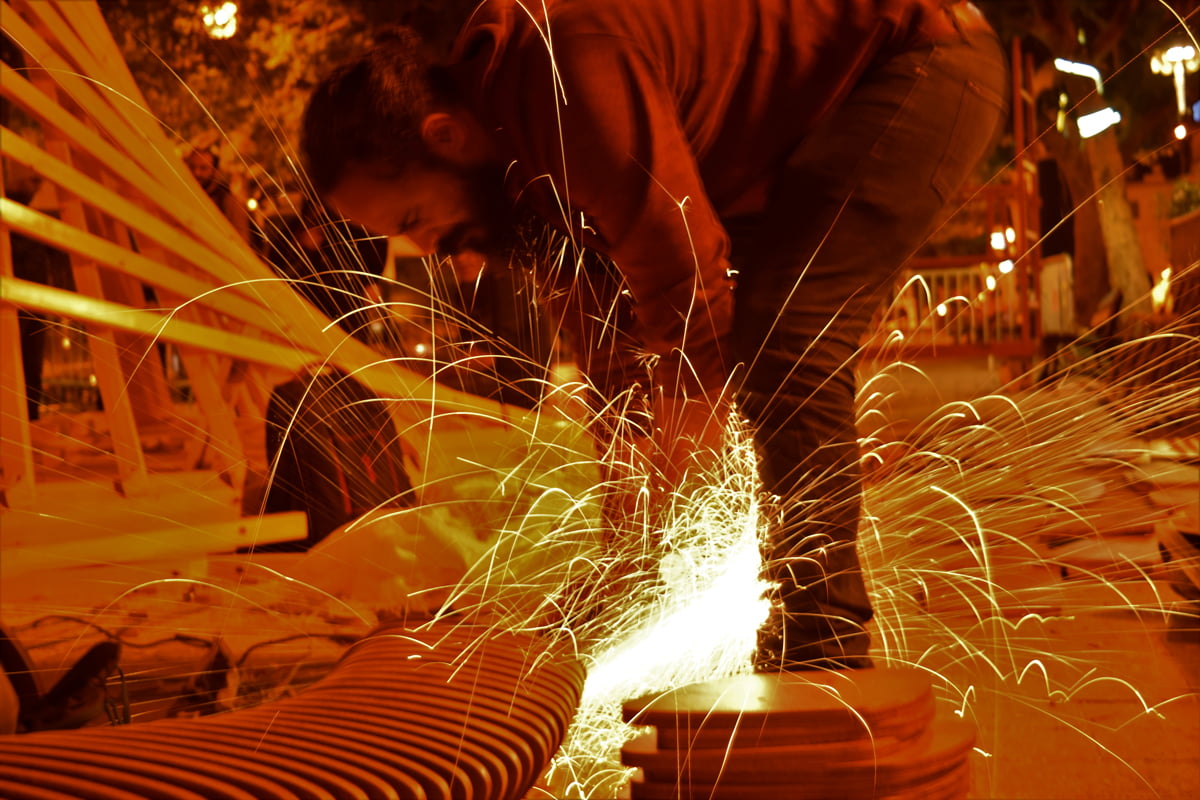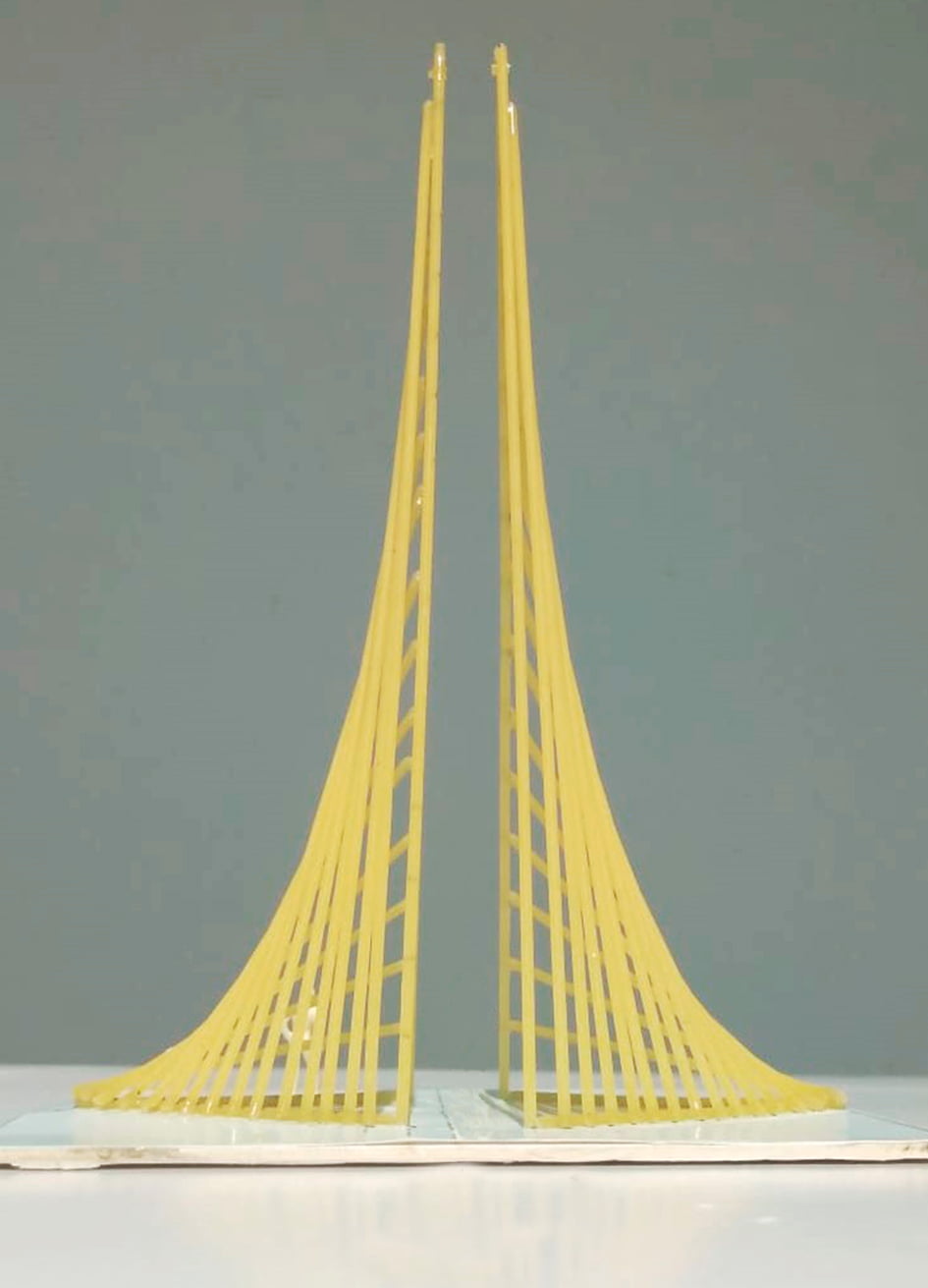Infinity Pavillion
Location: Tunis, Tunisia
Project Duration: 2020
Client: Ministère des affaires culturelles
Surface Area: 36 sqm
Status: Completed
Project Summary
At the occasion of the first edition of the Architectural Days of Carthage, a group of Tunisian architects was invited to intervene in the city’s public space with architectural installations of small and medium scale. As part of this event, Hasni & Hasni Architects, an architecture studio based in Tunis, led by Amine Hasni, was selected to install an ephemeral structure on Avenue Habib Bourguiba: Pavilion Infinity.
In less than 72 hours, the avenue passerby have seen an alien wooden structure rise on the median strip of the main boulevard, in front of the National Theater, right in the axis of the avenue’s central island, between the two rows of ficus trees. The pavilion is a wooden hyperboloid structure, 7.5 meters high. It is a perfectly symmetrical structure, made of two curvilinear meshes of interlaced wooden sticks, facing each other. The result is a light and see-through double-structure of wood lattice. Between its two bodies, a long narrow slit frames the view towards each end of the avenue: the Medina and Ibn Khaldoun’s statue at one end; and the Tunis clock and President Bourguiba’s statue at the other.
The structure does not interrupt the flow of rushing pedestrians, and nor does it cut the view in any direction. It does not disturb or block the busy daily life of the avenue. What it is intended to do is to insert a new landmark in a strategic spot of the city’s spine. Standing as lightly as it could be, it offers an observation and meditation haven from where the perspective of the avenue’s existent urban features is enhanced, and magnified.
The pavilion is designed as a piece of urban furniture set up in an iconic public space. It functions as a space and time marker. It is an invitation to pause movement, break speed, and look at the city from a new perspective and through another screen. Being inside the wood lattice offers the opportunity to experience the buzzing public space securely and differently. Pedestrians can walk along or through the pavilion; they can sit inside the screens, and contemplate the change of light, noise and movement in the city around them.
Change was the main theme for this piece of street-architecture. The structure’s shape changes depending on the viewer’s point of you. You do not see the same shape if you are driving besides it, walking along it, looking at it from a balcony, or sitting inside it. The idea of infinity was inspired by the nature of the place: Bourguiba Avenue itself has now become a symbol of change, of revolution, and of renewed beginnings. The pavilion has the ambition to bring an intangible and ever-changing presence on this avenue. It alternates presence and a feeling of absence; straight lines and an impression of curved surfaces; a solid structure and the impression of constant movement.
This is a first of its kind initiative where street architecture is displayed in the city of Tunis. The result stands between art, architecture and civil activism. The intervention itself shows that the architectural discourse, like other arts or other forms of expression and engagement, can create new strategies to fully claim the public space, embrace its complexities and wholly inhabit it.
Allrights reserved – Hasni and Hasni Architects 2024

